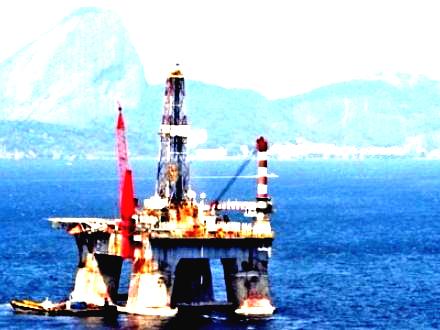Energy, Sea and Air: Use of Aerial Drones in OffShore Oil Platforms
Union between the Maritime, Energy and Aeronautical Sectors.
In a global context, marked by the growing trend towards the use and exploitation of renewable energies, there is still an unquestionable dependence on fossil fuels. This, together with the growing demand for hydrocarbons by developing countries, leads us to foresee an increase in the exploitation of oil fields. These scenarios have led to an increase in the demand for new and renovated offshore oil platforms.
Adapted to the rigors of time, with renewed techniques, where the inspection of these platforms tends to be as less impacting as possible with respect to the seabed and to make more and more frequent inspections of these superstructures with the use of unmanned aircrafts.
Now, why is the use of remotely piloted aircraft or commonly called drones, in the inspection of offshore platforms? The implementation of their use in the mentioned inspections was due to the discovery of a series of anomalies produced by breaks, corrosion, cracks in the welds of the platforms. In such a way that the drones could detect them in time before they caused damages of greater dimension, thanks to their dimensions, handling and versatility.
Remotely piloted aircraft are classified as unmanned aircraft. All unmanned aircraft, whether remotely piloted, fully autonomous, or a combination of both, are subject to the provisions of Article 8 of the International Convention on Civil Aviation entitled Unmanned Aircraft, issued by the International Civil Aviation Organization (ICAO).
The oil industry has increasingly found that progressively replacing the labor of qualified personnel descending through ropes with small drones equipped with high-definition thermal cameras can save time, reduce costs and improve the safety of personnel working on the platforms.
They could also boost production efficiency and contribute to reducing CO2 emissions from oil and gas in the geographical area where they are located (Norway, Canada, United Arab Emirates, just to mention a few).
Sky Futures, headquartered in London, is a drone inspection company that specializes in the oil and gas sector and counts BP, Shell, Apache, BG Group and Statoil among its clients, just to name a few.
It integrates the handful of companies such as CyberHawk, PrecisionHawk and SenseFly that have commercial applications for drones.
We can see how a key element in the evolution of technology was responsible for uniting three key sectors in the development of the Economy and International Trade such as: the Energy Sector, the Maritime Sector and the Aeronautical Sector. This leads us to the conclusion that the only permanent thing is change, as we find ourselves in a continuous search for economic and social balance through increasingly interesting proposals that facilitate daily life worldwide.


